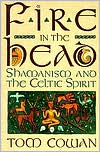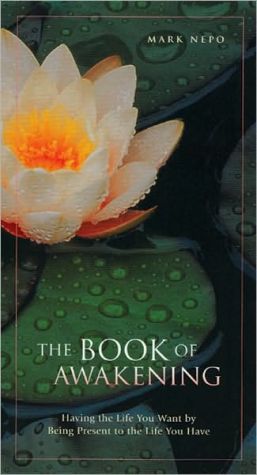Fire in the Head: Shamanism and the Celtic Spirit
In 'The Song of Wandering Aengus' William Butler Yeats refers to the ‘fire in the head’ that characterises the visionary experience. Tom Cowan has pursued this theme in a lyrical cross-cultural exploration of shamanism and the Celtic imagination that examines the myths and tales of the ancient Celtic poets and storytellers, and outlines techniques used to access the shaman's world.\ Tom Cowan is the author of 'How to Top Into Your Own Genius' and coauthor of 'Power of the Witch and Love...
Search in google:
In 'The Song of Wandering Aengus' William Butler Yeats refers to the ‘fire in the head’ that characterises the visionary experience. Tom Cowan has pursued this theme in a lyrical cross-cultural exploration of shamanism and the Celtic imagin
Chapter One\ \ \ Varieties of Shamanic Experience\ \ \ There was drumming in the hills around Edinburgh. A 1684 account published in London to prove the existence of witches and spirits describes a lad named "the Fairy-Boy of Leith in Scotland" who took his drum every Thursday night to a hill between Edinburgh and Leith. Here the "boy of the fairies" beat his drum while men and women passed through invisible doorways into another realm containing magnificent chambers filled with festive revelers eating, drinking, dancing, and making merry. After enjoying this otherworldly gala, the men and women flew in spirit to faraway places, such as France and Holland, before returning to ordinary reality.*\ Who was the faery boy of Leith? Who were the men and women able to pass through invisible doorways? And where did they really go?\ Contemporary shamanic practitioners, who use shamanic drumming methods to create the visionary state of consciousness for journeying into nonordinary realms of experience, would readily recognize this scenario. They would have no trouble explaining the boy, his drum, the entrances into the Otherworld, the spirit revelry, and the soul flight to France and Holland. All over the world, people are once again practicing the ancient methods of shamanism in drumming sessions similar to these reported in seventeenth-century Scotland.\ Shamanism is a worldwide phenomenon that has survived in various forms beyond the hunting-fishing-gathering societies of 20,000 years ago. As mythographer and scholar of world religions Joseph Campbell points out, shamanism is "the essential component of an immemorialtradition, to which a number of characteristics and related features are attached, of which some may be accented in one region, others in another, but always in relation to the unmistakable crisis of vocation" that calls a man or woman to become a "walker between the worlds" of ordinary and nonordinary reality.*\ To adapt a phrase from William James's classic work, Varieties of Religious Experience, there have been, and continue to be, varieties of shamanic experience. Contemporary shamanic practitioners may not be living and functioning as the classical shamans in traditional tribal societies because modern society does not currently acknowledge and support "fulltime shamans." As would be expected in an industrialized, urbanized society based on increasing specialization in almost every field, the many roles the shaman once played in archaic societies are now distributed among various professionals such as doctors, therapists, artists, entertainers, and clergy, to name a few.\ Is shamanism among contemporary shamans in native societies and among shamanic practitioners in urban settings a diluted form of the shamanism of old? It may be if there is credibility to the old Siberian legend about the super-shaman Morgan-Kara. Legend has it that after Morgan-Kara retrieved a soul which the High God was holding captive in a bottle, the High God split his two-headed drum with a thunderbolt. Ever since, the shaman's drum has only one head, and shamans have never been quite as powerful as Morgan-Kara. (At least not in Siberia.) So the current generation of shamans, whether they were trained by native elders or contemporary teachers of shamanism, may not be as powerful as the original shamans of the past.\ With or without the theory of "shamanic decadence"—that contemporary shamans are pale reflections of the shamans of old—we have clearly lost the rich, supportive shamanic culture in which shamans once operated. Since the Scientific Revolution around 1600, the dominant culture in the West has repudiated the visionary and mystical traditions of perceiving reality, on which shamanism is based. Understandably, most people today know little about shamanism. But strong or weak, recognizable or obscure, shamanism has not died, out, nor is it merely the vestige of some longforgotten spirituality. It has much in common with mystical and esoteric traditions in all cultures, ancient and modem. People around the world continue to have spontaneous shamanic experiences. Under different names, and with different explanations, the core shamanic experience is still a vital part of human life.\ The visionary experiences reported by shamans of ancient times continue to occur today among men and women in modem Western cultures, as well as among people still living in tribal societies. Anthropologist Michael Hamer, who pioneered methods for teaching core shamanism (the basic elements of shamanic practice stripped of specific cultural trappings) and making it relevant to contemporary society, notes in his classic work, The Way of the Shaman, that "shamamic methods are strikingly similar the world over, even for peoples whose cultures are quite different in other respects, and who have been separated by oceans and continents for tens of thousands of years."' Some anthropologists explain this by the theory of dispersal, that shamanism originated among one group of people who then migrated, carrying the tradition with them to other parts of the globe. But what Hamer and others call core shamanism may be a normal human archetype. Campbell points out that "the central nervous system of our species has hardly changed in the mere 12,000 to 15,000 years following the period of the shamans of the caves" and that a "similar human strain" runs through all the manifestations of shamanism wherever it is found.' Perhaps in each of us there is an innate image, a not-fully-conscious hope, of a man or woman who knows methods of journeying into unseen realms with the help of spirit companions and returns with wisdom and knowledge that can heal the human spirit.








